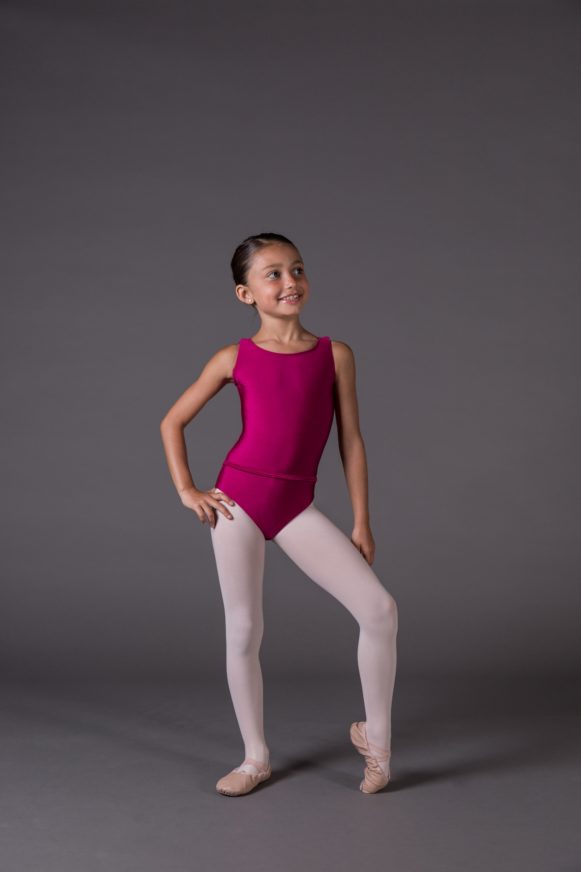How to dress for ballet class
How to dress for ballet class? Today we will talk about appropriate attire for a ballet class….
In ballet, although it may seem obvious to specify, the basic training kit includes three basic elements: leotard, tights, and half-tips.
My leotard: Cotton or Lycra?
The dance leotard can differ in both patterning and fabric making.
Opting for a particular model is mostly a matter of individual taste (except for requirements related to internal regulations of academies or specific teaching methods)
Instead, the choice of realization fabrics divides insiders’ opinions.
Cotton
as a natural fiber is a hypoallergenic fabric that absorbs sweat excellently and is quite durable over time.
In contrast is cotton is a poorly elastic fabric that tends to shrink after a few washes.
Therefore, this fiber does not provide optimal fit and comfort and, due to sweat impregnation, is prone to discoloration and bad odor and therefore does not allow for aesthetic consistency over time.
Lycra
on the other hand, is a synthetic fabric endowed with great elasticity, tends not to fade when washed at low temperatures, and thus provides greater wearability and color consistency over time.
Because it has poor wicking properties, Lycra can promote irritation or allergic reactions to its components, especially for more sensitive skin.
To overcome this, some manufacturers coat the bodysuit internally with a layer of hypoallergenic fiber or breathable mesh.
This expedient achieves the result of defining the body line more and increasing the feeling of comfort due to the increased support and firmness provided by the double layer of fabric.
Therefore, it is generally preferable to purchase internally lined leotards regardless of whether they are made of lycra or stretch cotton
And for my feet better canvas or leather?
Ballet half po inte shoes are divided into 4 main categories: full-sole canvas half pointe shoes, split-sole canvas half pointe shoes, full-sole leather half pointe shoes, and split-sole leather half pointe shoes.
The full sole provides more support on the floor and being stiffer in its curvature forces the foot to exert more effort.
This type of sole is definitely more suitable for first courses. In fact, the students must learn to point the foot, as well as strengthen it, but at the same time they must feel more stability in contact with the floor.
The split sole (also known as a teardrop sole because of the shape) tends to adhere more closely to the foot, enhancing the line of the foot and facilitating movement through increased foot contact with the parquet floor.
Among other things, these features allow the teacher to better grasp the movement.
Regarding the choice of realization fabric, it is always good to remember that:
Leather is more durable so it has the merit of being longer lasting and more suitable for any type of floor. Due to its stiffness, leather is technically less performing because it limits the movement of the foot more and does not enhance the line of the foot.
The skin also has the defect of not being able to be washed so with sweating it will tend to smell bad over time.
Although canvas is more delicate and therefore prone to deterioration, it is technically more suitable for encouraging and highlighting foot movement.
The cloth is also aesthetically pleasing (including the ability to be colored) and is both hand and machine washable at low temperatures.
Tights
Tights for ballet are normally made of micro fiber and can vary in thickness (denier) and coloration.
For the study, we tend to use 50-denier tights in white or pink.
These tights have the characteristic of being rather resistant to contact with the floor but at the same time stretchy and not overly thick to promote movement.
Professionals will tend to use the more transparent 40-denier tights.
So how to dress for ballet class?
In fact, there is no “ideal clothing” that applies to everyone.
Indeed, some elements must be taken into account that condition the final choice:
The degree of experience of the dancer, the characteristics of the room, membership in an academy or school that applies a specific method, and, last but not least, also the preferences of the teacher.
However, for the first courses it is advisable to use:
- A girl’s studio bodysuit made of lycra or cotton as long as it is lined inside with hypoallergenic fiber
- Of a pair of 50 den micro fiber tights
- Full-sole leather or canvas half toes.
For intermediate and advanced courses, where technical and aesthetic requirements begin to become preponderant:
- a women’s lined lycra bodysuit
- 50 den micro fiber tights for studio and 40 den for performance
- Canvas half toes with drop soles.
